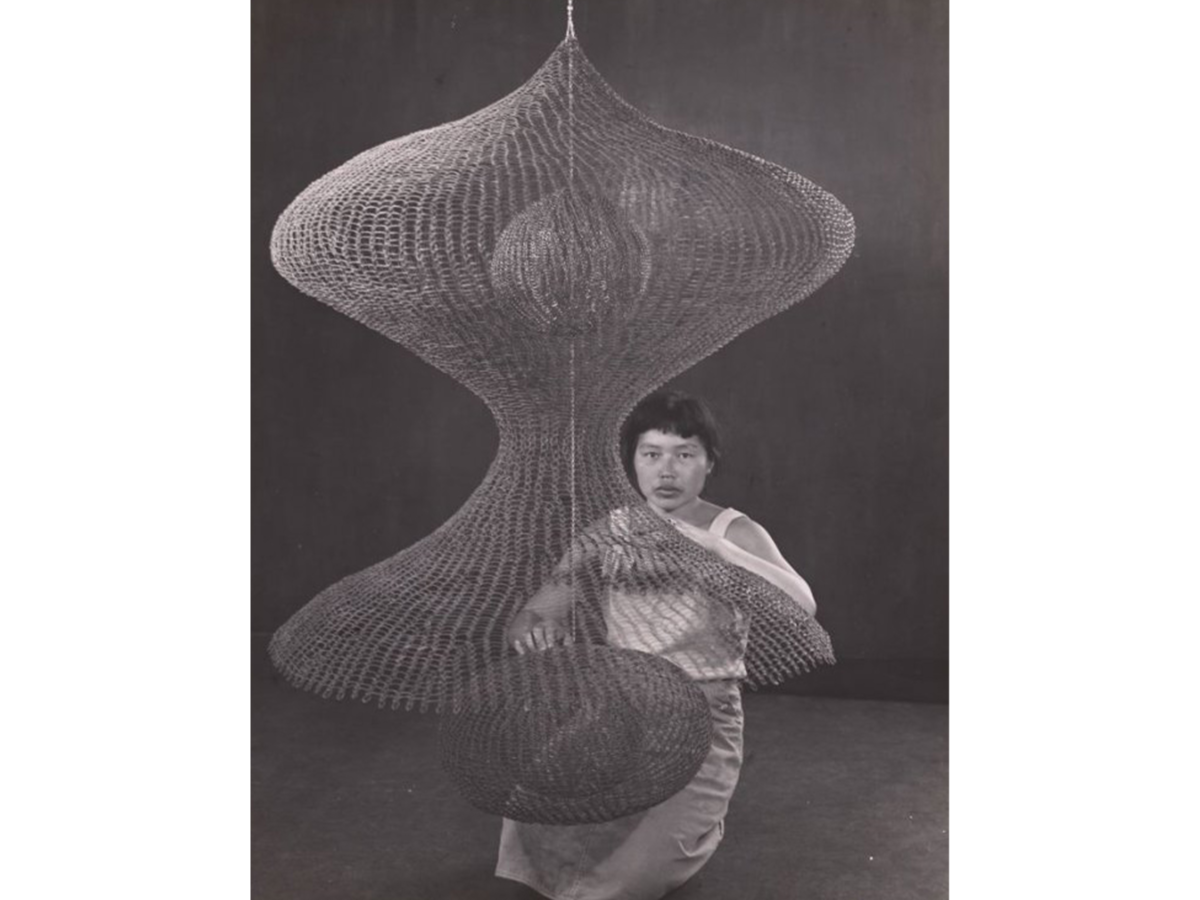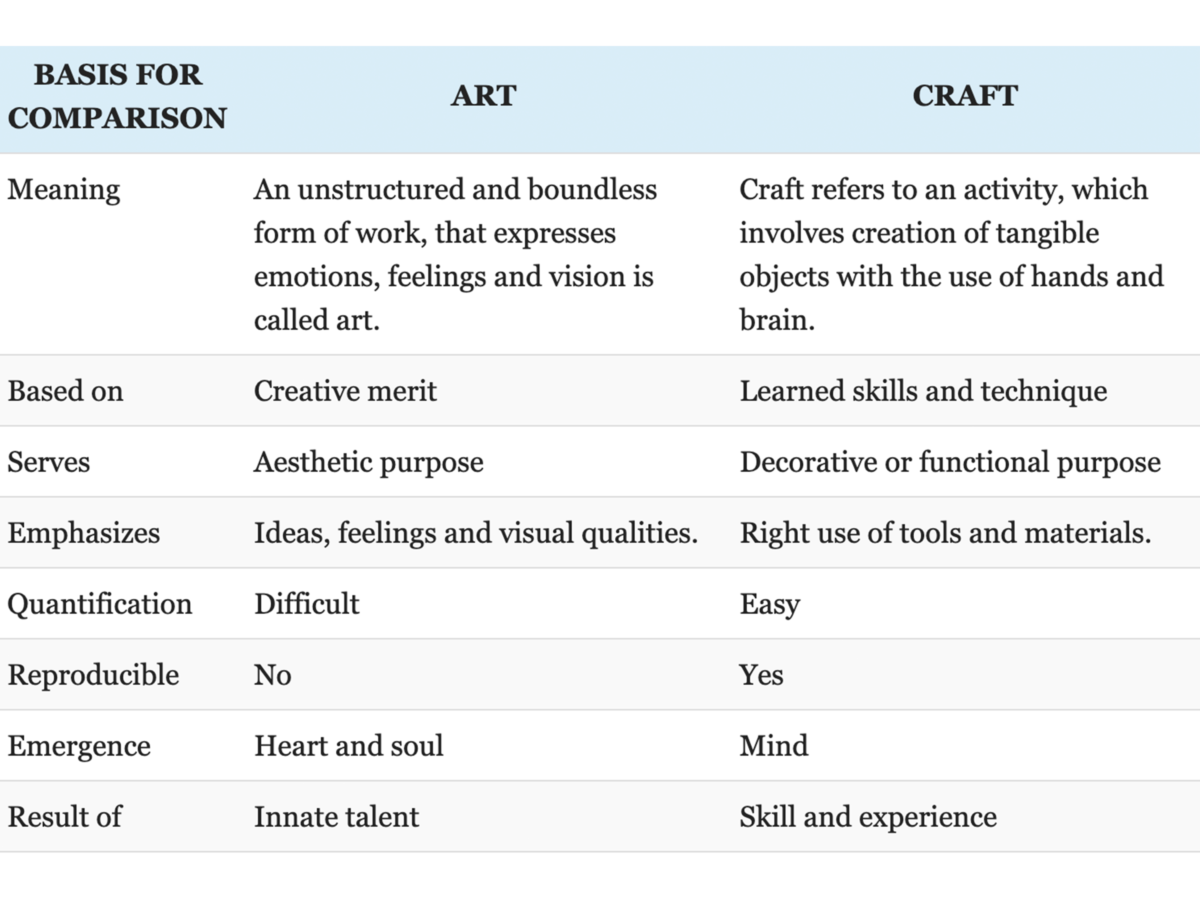Activity
The Dichotomy Between Fine Art and Crafts
Objective: Students will explore the dichotomy between craft and fine art while investigating Ruth Asawa’s sculpture work and identity.

View examples of Ruth Asawa’s sculptures and a graphic organizer for fine art and craft differences.
“Throughout her career, Ruth Asawa’s art was labeled domestic, excluding her from fine-art circles [and well-deserved influence]. For example, in a 1956 review of an exhibition of Asawa’s work, ArtNews wrote, ‘These are ‘domestic’ sculptures in a feminine, handiwork mode.'” [By dismissing Asawa’s work as handicrafts, fine art circles disregarded her artistic process and creative genius.]
Early critics such as the ArtNews reviewer interpreted Asawa’s work through the lens of her gender. By “viewing Asawa’s work [solely] through the lens of her gender . . . the sculptures [were identified] with the handicraft tradition of decorative arts.”
[This dichotomy between craft and fine art, where craft is considered lesser, continues today, although in recent decades artists, scholars, and museums have worked to dismantle this artificial division based on gender.]
Source: SPARKed. “The Family Business, Ruth Asawa, Visual Art.” KQED. Accessed May 22, 2020.
Common Core Content Standards (California)
3.VA: Understanding the historical contributions and cultural dimensions of the visual arts
3.VA:Re8: Interpret art by analyzing use of media to create subject matter, characteristics of form, and mood.
4.VA: Responding to, analyzing, and making judgments about works in the visual arts
5.VA:Cn11: Identify how art is used to inform or change beliefs, values, or behaviors of an individual or society.
6.VA:Re7.2: Analyze ways that visual components and cultural associations suggested by images influence ideas, emotions, and actions.
Prof.MA:Cn11: Demonstrate and explain how media artworks and ideas relate to various contexts, purposes, and values, such as social trends, power, equality, and personal/cultural identity.
Materials
- A device with internet access
- Projector
- Speakers
Procedure
- Introduce Ruth Asawa, showing students projections of her work using the visual archive links above.
- Show the following video: Laura Morelli, “Is there a difference between art and craft?” TEDed. https://www.youtube.com/watch?v=tVdw60eCnJI
- Optional: Have students answer the following questions about the TEDed video at https://ed.ted.com/lessons/is-there-a-difference-between-art-and-craft-laura-morelli/review_open#question-6 (8 multiple choice and 3 short answers)
- Initiate a discussion on art and craft.
- Ask students to contribute what they think of when someone says craft or art. How do we define these terms? What are the differences between them? Record responses on the whiteboard.
- Show the above Key Differences Graphic Organizer, for Art v. Craft available in the image gallery above.
- Challenge students to consider the following points:
- Is Asawa’s work aligned with domestic handicrafts because weaving is a traditional craft technique (rather than an “art”)?
- Is this view compounded by the fact that Asawa is a woman, and is her work denigrated because of weaving’s association with “woman’s work”?
- Invite students to complete a writing prompt or discuss in groups: What are the differences between art and craft today? How should we define the terms? Do these differences lead to a greater appreciation or understanding of the work today?
- Include requirements suitable for your class.
- Example: Use three sources in your writing assignment to support your thesis.
High School Modifications
During your discussions on craft and art, include the following questions to broaden the conversation.
- Do fine art and craft overlap?
- Are arts and crafts defined by their “high” and “low” cultural associations?
- Brainstorm culturally specific examples and consider how they are defined.
- Do art critics and museums promote different perceptions of art vs. craft?
- Is this changing in the contemporary world, and why might that be?
- Encourage students to use examples wherever possible to support their arguments and observations.






